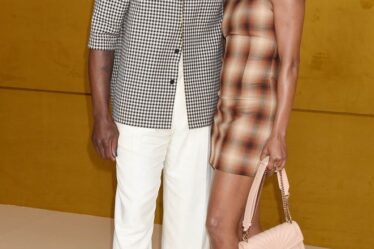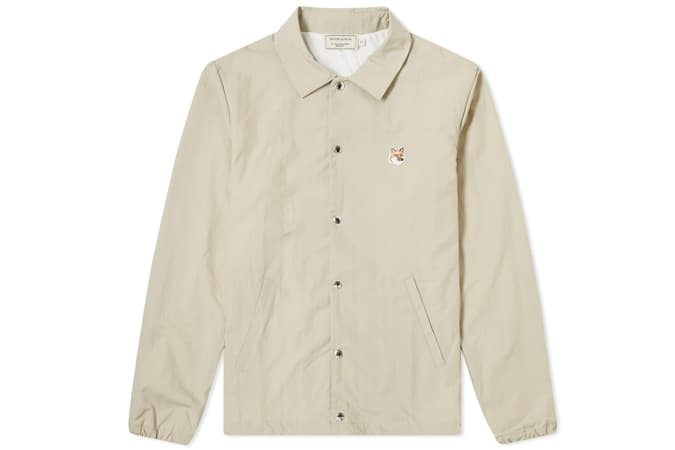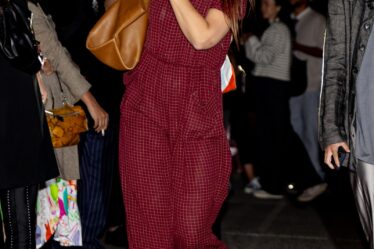
At this year’s Met Gala, Swedish fast fashion retailer H&M dressed more people than Gucci and mall-mainstay Tommy Hilfiger was mentioned more on social media than Chanel during the red carpet.
Brands outside the luxury bubble made a bigger splash than usual at fashion’s most talked-about night. To be sure, luxury labels still fuel the lionshare of excitement (and reap most of the attention) but last night, their custom creations stood side-by-side with looks from their lower-priced counterparts on the Met steps.
American mall brand Gap dressed Oscar-winning “Holdovers” actress Da’Vine Joy Randolph in a bespoke, ruffle-sleeved and flowing denim gown. Model Adwoa Aboah announced her pregnancy in a custom, flame-red bubble skirt and ruffle bolo by H&M. PVH Corp-owned Tommy Hilfiger, known for its mid-priced (and often discounted) slacks and sportswear, dressed K-Pop band Stray Kids for their first appearance on the Met steps, and in doing so, generated more conversation online than any brand on the carpet during the red carpet according to social media analytics firm Brandwatch.
Dressing stars for the Met Gala hasn’t always been exclusively the domain of luxury powerhouses: Gap worked with designers including Alexander Wang and Rodarte on looks in 2010 and Aurora James, founder of the footwear label Brother Vellies, in 2021. H&M made its first appearance in 2015, dressing Sarah Jessica Parker and Vanessa Hudgens, and has brought a cast of celebrities almost every year since. The now nearly defunct British high street retailer Topshop was the first to dress supermodels Kendall Jenner and Bella Hadid for the event in 2014 and 2015, respectively.
But the category’s presence was felt this year more than most, especially given the absence of luxury mainstays Gucci and Louis Vuitton, who chose to forgo the event this time around.
Though there may be a bit of a disconnect between the bespoke gowns shown on Monday and the T-shirts, jeans and other basics that make up most of their day-to-day sales, the Met Gala — and the red carpet generally — holds major appeal for mass market players, especially as many set their sights on generating more brand desirability amongst consumers.
“It says ‘Hey look at me, I’m not as flat-footed in fashion as you thought,’” said Allen Adamson, CEO of marketing consultancy Metaforce.
Dressing for a Double-Take
The Met Gala has long been a setting for fashion brands to build buzz, but for mass market players specifically, it represents an opportunity to create a prestige glow and make consumers reconsider their perception of the label.
“It forces [consumers] to take a fresh look at the brand,” said Adamson.
Many of the mass brands that turned up on Monday’s green-and-cream carpet could use it.
While still a leading fast-fashion player, H&M has lately found itself in a bit of a retail no-man’s land. It’s not quick enough to keep up with faster-fashion players like Shein and Temu, but it also hasn’t been able to successfully move a little further upmarket (and command higher prices) like Zara.
Being on the carpet alongside luxury powerhouses like Chanel and fashion favourite labels such as Alaïa and Maison Margiela allows H&M to both show its range and promote its occasionwear business, said Ann-Sofie Johansson, the retailer’s creative advisor and head of design. Often, themes and silhouettes its designers focus on for the Met Gala carpet will find their way into the main mix, said Johansson. Aside from Aboah, H&M also dressed actresses Awkwafina and Hari Nef, models Paloma Elsesser and Quannah Chasinghorse and NFL player Stefon Diggs.
“It’s a cultural moment, it’s a phenomenon,” said Johansson. “Even if you’re not into fashion, you still know the Met Gala, you’re still looking at the dresses.”
Becoming a greater part of cultural conversation has also been top of mind for Gap, which is in the midst of a turnaround effort. The retailer hired former Mattel chief Richard Dickson — who was behind 2023′s “Barbie” craze — as CEO in July 2023; one of his first big moves was to appoint designer Zac Posen as executive vice president and creative director in February.
The Gala served as something of a crowning moment for Posen — who wore a Banana Republic suit to accompany Randolph — in his new role. Plus, the focus on denim got attention in a way that felt in line with the brand’s ethos.
“Everybody noticed it because it was just so stunning … but it was also a great branding moment for Gap because it reinforced the idea that they are synonymous with denim,” said Tom Fitzgerald, co-founder of red carpet blog Tom and Lorenzo.
Tommy Hilfiger himself is a red carpet regular, but his brand hasn’t generated a huge amount of excitement at the Met since Zendaya’s Cinderella moment for the “Notes on Camp” themed fete in 2019. On its 2023 fiscal year earnings call in April, Stefan Larsson, chief executive of parent company PVH, said the brand would continue to prioritise driving desirability around the Tommy Hilfiger and Calvin Klein brands in the year ahead. Revenue for the combined businesses was down 2 percent in North America in 2023 versus 2022. Dressing buzzy K-Pop band Stray Kids — which has a vocal and active online fanbase — is a promising first step.
A Mass Market Met Gala?
Most brands — whether you’re H&M or Balenciaga — aren’t selling the custom looks they put on the carpet. And like the Gap, occasionwear doesn’t drive a majority of revenue for most luxury businesses, which rely on more accessible items like handbags and shoes to pad their bottom line.
Still the gap between what’s on the Met steps and the products that sell is bigger for mass-market brands than it is for luxury, and labels runs the risk of confusing consumers with a Met appearance. Case in point: Many mentions of H&M’s looks on social media are centred on surprise that the brand is there at all, despite plenty of past appearances.
There are ways to make red carpet moments feel more relevant to regular shoppers, though. As soon as Nell Diamond, the founder of DTC apparel brand Hill House Home stepped on the carpet wearing a custom piece by the brand, Hill House Home shared on social media that it would make 10 special-edition, custom-made dresses out of the excess fabric from Diamond’s dress, styled into its signature nap dress shape. The dresses, which retailed for $278, quickly sold out.
The extent to which mass market brands continue to buy-in to the Met Gala remains to be seen: return is hard to measure, and the event is a huge investment — buying a table reportedly costs a brand $350,000. Their presence at the event could change the calculus for luxury labels, too.
“For luxury, it’s about the company you keep. If the Met Gala gets devalued or goes from class to mass or goes from panache to ordinary, it’s not a place they’ll hang out anymore,” said Adamson.
That’s an unlikely outcome — non-luxury labels still make up a tiny fraction of invites and an even smaller fraction of conversation around the event.
“There’s room for everybody at the table even if those tables cost thousands of dollars,” said Fitzgerald. “It’s about the designs themselves and whether it’s up to that setting.”



